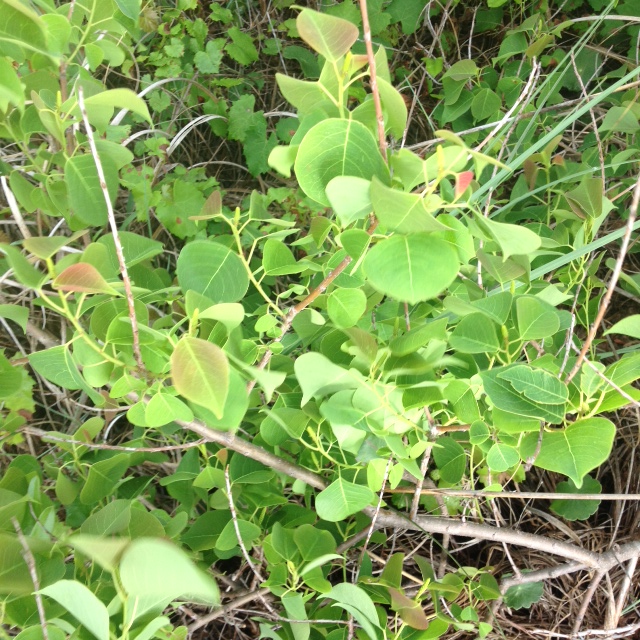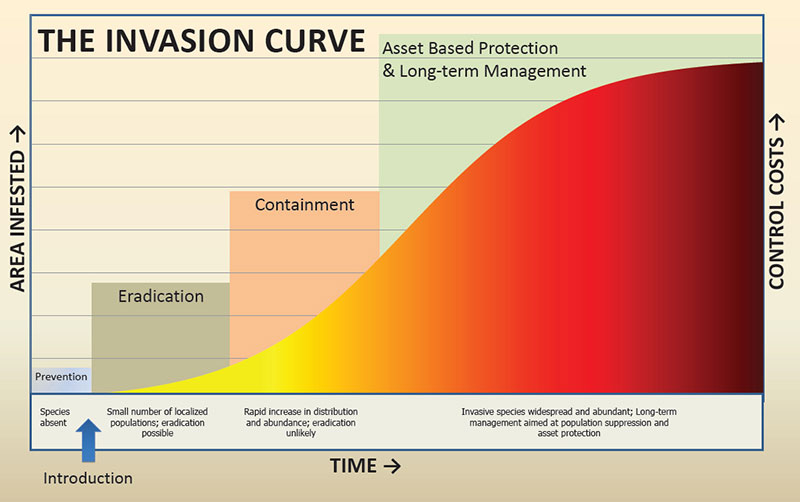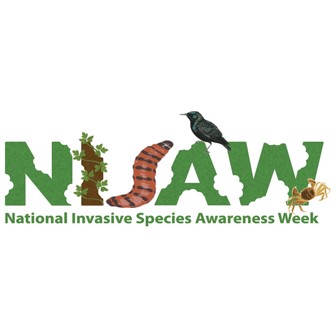National Invasive Species Awareness Week
Each year scientists, resource managers, science educators take some time in February to make the public aware of the invasive species issue. Over the last few decades, I believe this has happened. News articles, fact sheets, public events, even kids’ television programs have covered the topic. You wonder what else needs to be said. But I have found that there is still a lot of confusion about invasive species.
For one… what exactly IS an invasive species. The term is used for almost any creature we do not like or seems to be a problem for us. And on the flip side of that, some species which have been deemed invasive we don’t see a problem with. Many have told me – “What problem does the Chinese Tallow cause? I like this tree in my yard. It is one of the few that shows color in the fall and I want to keep it”.

There are several characteristics used to identify a creature as invasive but causing an environmental or economic problem is a big one. Many species of vine come to mind. Kudzu, Japanese Climbing Fern, and Old World Climbing fern are good examples. These plants grow rapidly, covering all things in their way – other shrubs, trees, homes, garages, electric wires, and more. You can see them expand like a cancer across the landscape and realize that all other plant life will not be able to compete with them. Then you might realize that animals that depend on those native plants are in trouble as well. And then add into the labor and cost of removing them only to watch the invasion reoccur next year. I know here on Pensacola Bay they have spent thousands of dollars trying to remove kudzu from a shoreline bank near a popular restoration area. Only to find the entire area covered again in a couple of years.
Then there are the invasive animals that have caught our eye. The Burmese python and red lionfish come to mind. Burmese pythons can reach lengths between 15-20 feet and weigh almost 200 pounds. They can consume almost any small mammal in the environment and have even taken on large ones, as well as alligators. There are thousands of them now in heavily populated south Florida and their presence is unnerving to those residents – to say the least.

The red lionfish is one of the most successful invasive species ever. After the initial release(s) in southeast Florida in the 1980s they have expanded to cover the entire south Atlantic region. They are opportunistic feeders consuming whatever they can get into their mouths and altering the ecology of our coral reef systems.
But then there are comments I have heard concerning the expanded growth of native muscadine or dewberry vines across one’s yard. “These things are invasive, aren’t they?” Actually… no they are not. They may be problematic, a nuisance, but not invasive. Living in the Florida panhandle I have had residents who have moved here from south Florida ask me whether mangroves would be considered invasive here. But the spread of mangroves north is occurring naturally – so, no it would not.
So… how DO we define an invasive species?
The University of Florida IFAS Extension defines an invasive species as (1) a species not native to the area, (2) a species that was introduced by humans – whether intentional or not, (3) a species that causes either an environmental or economic problem – possibly both.
Battling invasive species can be labor intensive and costly. As you can see on the graph below, the best method is preventing the species from ever reaching your area. Easier said than done. First you need to know which species to be on the lookout for. Second you need to know how it is dispersing across the environment before you can prevent it. If you miss the initial invasion, you will see Early Detection and Rapid Response (EDRR) is the next plan of attack.

Making the public aware of these species, and the problem, is what NISAW is all about. Helping the public to better understand how to manage the invasive species and prevent new ones from arriving is also a part of this effort. We will post articles about invasive species found in the Florida panhandle throughout the rest of this week. Some are in the red part of the invasive curve. Some are just beginning to be found here. If you ever have questions about a species on your property, you can always reach out to your county extension office for help and advice.

- Our Environment: Part 11 – We Need Water - July 7, 2025
- Our Environment: Part 10 – Improving Agriculture - June 20, 2025
- Marine Creatures of the Northern Gulf – Snails and Slugs - June 20, 2025
